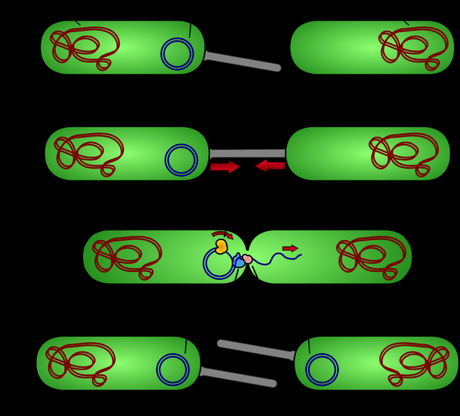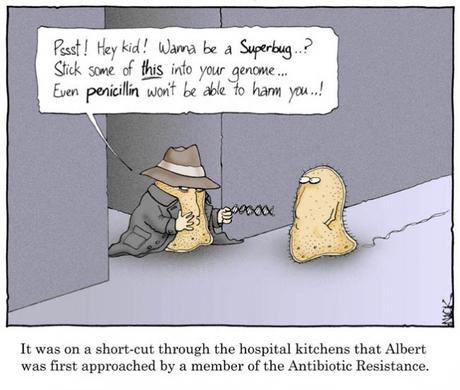Polymyxins are a group of bacterial origin cyclic polypeptides with antibacterial properties. It was isolated by a Japanese researcher in 1949 from a jar of fermenting bacteria. Colistin, also known as Polymyxin E, which is produced by the bacteria Paenibacillus polymyxa var. colistinus, is a polypeptide antibiotic, which is effective against almost all gram-negative bacilli. Owing to its nephrotoxocity and the subsequent development of more targeted and safe antibiotics, colistin never really went on to have massive usage in clinical medicine. However, also owing to the fact that it was an old, cheap and readily available antibiotic, it started to figure more in agro-livestock use.
In livestock rearing, especially in case of piggeries, prophylactic, sub-therapeutic use of antibiotics is a major problem. These animals are reared in industry-mode, highly intense farming situations, which have questionable hygiene and sanitation facilities, making them susceptible to multiple infectious insults. Adding prophylactic doses of antibiotics has long been one way to ward off such issues and promote growth and productivity in farm animals.
The other side of the coin is that, such indiscriminate use has precipitated the risk of emerging antimicrobial resistance in bacteria. Colistin was reclassified by the WHO as a critically important antibiotic for human medicine in 2o12, mainly in view of the rapid emergence of antimicrobial resistance in gram negative agents, tending towards pan-drug resistance. However, there have not been similar stress been put on curbing the use of antibiotic use in veterinary and animal husbandry sectors.
The emergence of Colistin resistance through its overuse and abuse in farm animals is eerily reminiscent of the emergence of Vancomycin Resistant Enterobacteriaceae in Denmark; in Denmark, Avoparcin, a glycopeptide drug sharing a lot of properties with the critical drug Vancomycin (another last line antibiotic), was used in farms (especially piggeries) for growth promotion and productivity increase. This soon resulted in the emergence of Vancomycin Resistant Enterococcus faecium in clinical and community isolates.
A recent paper in the Lancet Infectious Diseases has found something similarly alarming: plasmic mediated genes for conferring colistin resistance (mcr-1) in commensal Escherichia coli in food animals in China. This was unearthed during a routine surveillance project to monitor the emergence of antibiotic resistance.
This is not the first instance of Colistin resistance being isolated from community or clinical isolates. The fact that this resistance is plasmid mediated is what makes it more dangerous.

Previously, resistant isolates were conferred resistance through chromosomal genes. From the biological point, this has a major ramification: resistance conferred by plasmids maybe transfered from one strain of bacteria to another since plasmids, which are small fragments of circular DNA, can shuttle across from one bacterial strain to another. Chromosomally mediated genes are limited to the same strain of bacteria. Thus, though in both the cases there is a clinical risk and emergent antimicrobial resistance, the plasmid mediated resistance appears to be of a higher risk profile for the long term damage it can cause.

The current trends that are emerging with respect to antimicrobial resistance getting in through selection pressure caused by indiscriminate use of critical, human-medicine-related antibiotics for growth promotion and productivity-increment in farm animals is a major concern. In developing countries which are experiencing rapid urbanization, economic and market pressures, including concerns for food security, has resulted in worsening of antibiotic overuse in farm animals.
Until such time as adequate concerns about the emerging post-antibiotic apocalypse is generated in the minds of our policy makers, this downhill trend is going to continue till the emergence of a pan-drug resistant strain of bacteria emerges.
Suggested Reads:
Maryn McKenna's blog on the National Geographic: Apocalypse Pig: The Last Antibiotic Begins to Fail
Mike the Mad Biologist: Last Line of Antimicrobial Defense is Falling: Colistin Resistance Transmission
References:
- Bager F, Madsen M, Christensen J, Aarestrup FM. Avoparcin used as a growth promoter is associated with the occurrence of vancomycin-resistant Enterococcus faecium on Danish poultry and pig farms. Prev Vet Med. 1997 Jul;31(1-2):95-112. PubMed PMID: 9234429.
